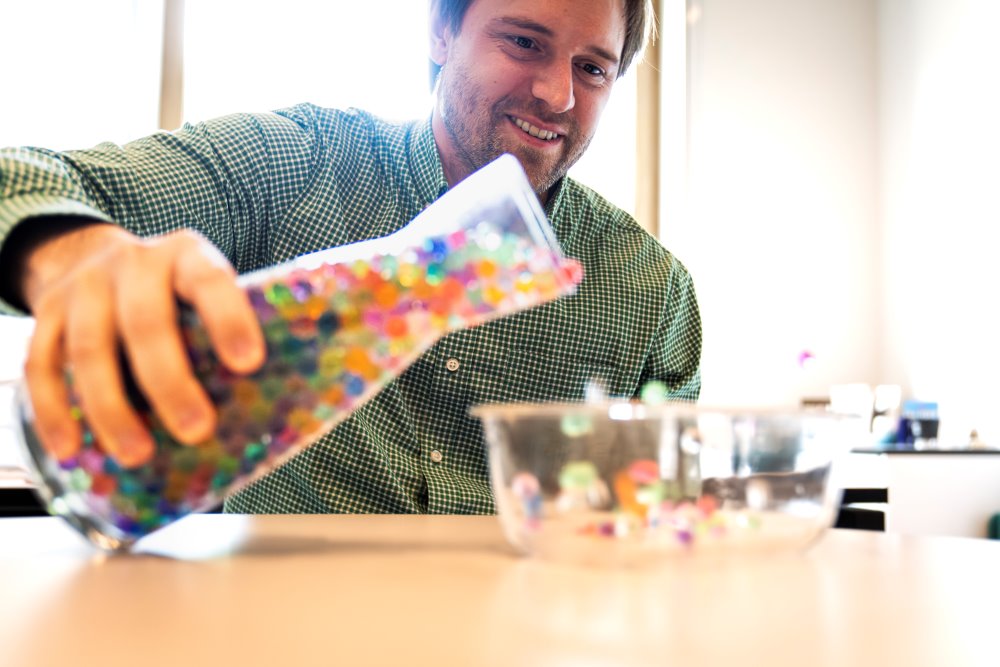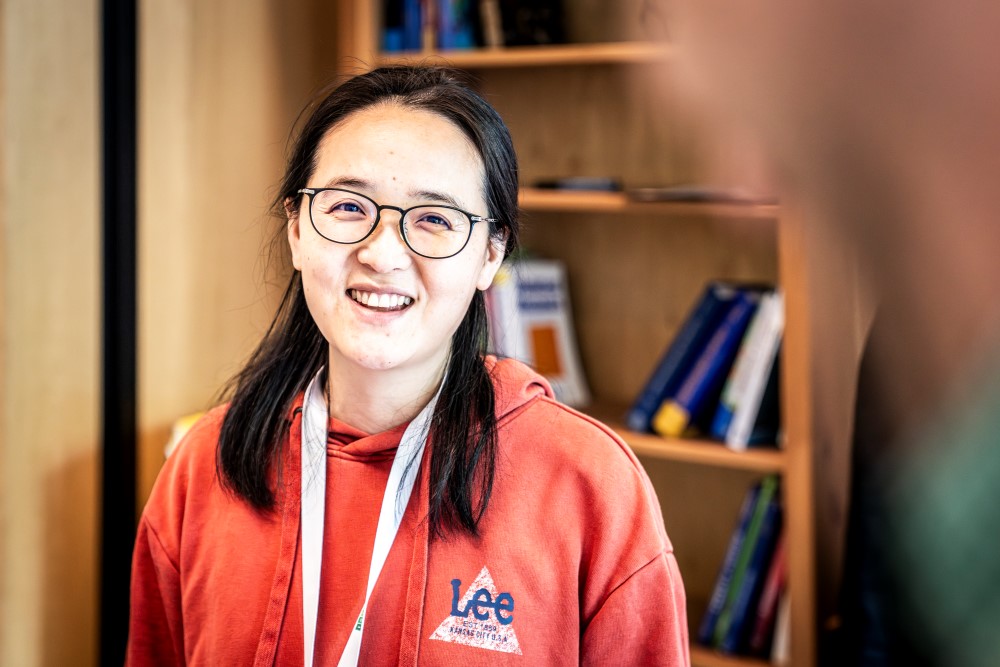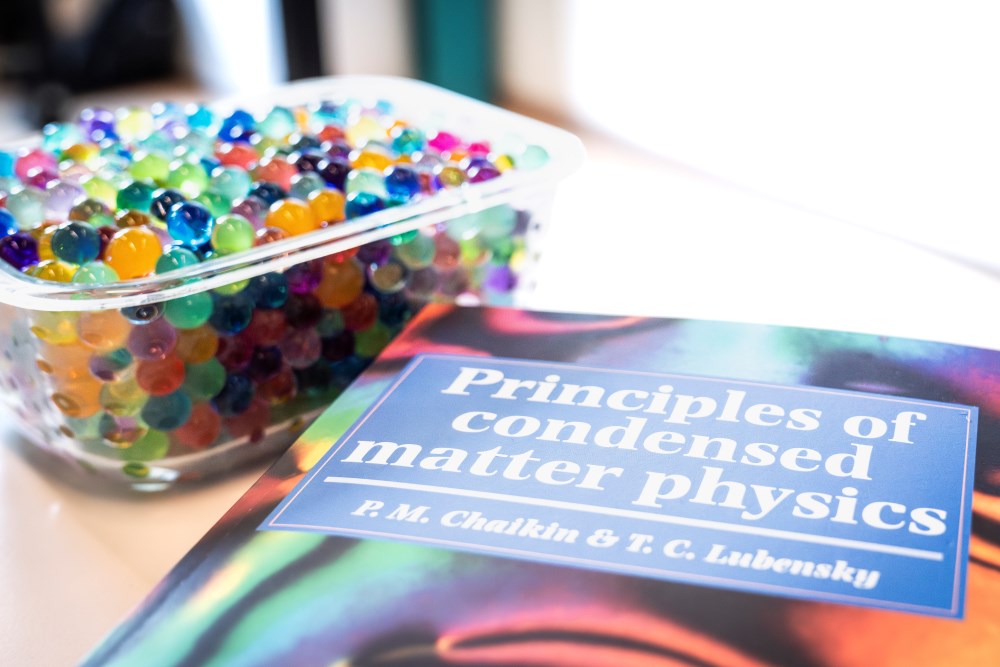June 12, 2025
Infinite Diversity in Infinite Combinations
ISTA scientists formalize how amorphous solids learn nontrivial behaviors
Can we understand and predict how complex systems learn? Modeling learning in a theoretical framework in disordered solids, researchers at the Institute of Science and Technology Austria (ISTA) make surprising findings reminiscent of a Star Trek philosophy. Their interdisciplinary work creates a practical tool to understand and perform inverse design and is a concrete step toward formalizing learning in various systems. The results were published in Physical Review Letters.

Generative artificial intelligence has become so widespread that it is difficult for anyone to claim they have never interacted with a large language model. But, beyond reflecting the appearance of intelligence, how can such highly complex systems learn and develop specific behaviors? The same question about learning applies to various phenomena in our tangible world. These range from how evolution works to the wiring of our brain to myriad physical systems. “The major challenge is that we are still lacking a unified framework to describe learning systematically,” says Carl Goodrich, assistant professor at the Institute of Science and Technology Austria (ISTA). Now, he teamed up with postdoctoral fellow Mengjie Zu and PhD student Aayush Desai to advance the theory of learning in systems. Their theoretical work using disordered solids—i.e., materials whose atoms are not arranged regularly on a grid—is a concrete step toward a unified theory of how materials and systems learn, and serves as a practical tool for designing novel materials. It could further have ramifications well beyond disordered solids, possibly shedding light on all systems, including machine learning.

Colorful, squishy marbles in a jar
Systems can display different behaviors or perform various tasks. But theoretical physicists, mathematicians, and material scientists ask whether a certain model can perform all these tasks simultaneously. This is the “independence” principle, defined as different features in a system or material that can be tuned independently. To help visualize this, Goodrich, Zu, and Desai used a highly simplified toy model of amorphous solids: deformable little spheres in a container, like squishy marbles. These little spheres have different colors to represent the various parameters in the model. “We can easily imagine applying a force that locally deforms the spheres, but can we link a specific parameter in the model to a distinct, nonrandom outcome?” asks Goodrich. “Ultimately, we are looking to cut through the complexity of the disordered solids by unlocking the potential of their independently tunable parameters.” While the colorful spheres help visualize the theoretical model, the actual research is in theoretical physics and mathematics.

Understanding a decades-old theory
In their theoretical model of disordered solids, the ISTA researchers pictured the parameters as ‘inputs’ into a black box of physics. What comes out of this black box are the model’s various features or ‘behaviors.’ They argue that their research allows them to understand what is happening inside the black box. “The actual math is probably the simplest one can imagine and still makes it possible to achieve non-trivial behaviors,” says Goodrich.
However, the theory behind this math has existed for fifty years. So why was the problem not solved long ago already? “It is only in the past decade that a class of numerical tools has matured to the point that we can now calculate a particular Jacobian matrix,” Goodrich explains. “This allowed us to crack the black box of physics open and draw solid conclusions.”

Findings reminiscent of a Star Trek philosophy
Traditionally, material scientists have tuned materials’ properties based on their crystal structure, which would necessitate major structural changes. However, in recent years, scientists increasingly suspected that very small but precise modifications in the properties of amorphous solids could result in major changes in their behavior. The research from the Goodrich group shows that this intuition was right.
In a recent work published in 2024 in Communications Materials, Zu and Goodrich demonstrated that inverse design in disordered solids was more effective than expected in many cases. Inverse design is a research approach where a desired outcome or functionality is used as the starting point to design a material, geometry, or process that achieves that outcome. Their current Physical Review Letters publication addresses why this is possible at all and how to best tune the materials’ properties. Based on the calculation of the Jacobian, they can now adopt a new system and predict the outcomes they demonstrated in their earlier work. “Before I joined the Goodrich group for my postdoc, I thought it was almost impossible to predict the behavior of disordered systems,” says Zu, who used to study the behavior of crystals during her PhD. “Working on this project, I realized that disordered systems have infinite potential in designing all sorts of properties.”
Desai, who contributed to the work as part of his graduate rotation in the Goodrich group, makes a mental association with a Star Trek reference: “What Mengjie just explained about the findings reminds me a lot of ‘Infinite Diversity in Infinite Combinations,’ or IDIC, the basis of Vulcan philosophy.” Whereas the Vulcans devised IDIC to appreciate the vast array of variables in the universe, firmly believing that diversity and unity can coexist and are both valuable, Zu, Goodrich, and Desai are starting to uncover the infinite potential of amorphous solids.

From novel materials to machine learning?
The team’s theoretical work showcases a strong ‘intentional’ link between inputs and outputs and could open possibilities for designing or generating novel materials to fulfill specific needs. “In principle, we now have a path forward for making materials with a combination of properties that might otherwise be impossible,” says Goodrich. Previously, researchers could only tune two outputs independently in amorphous solids. In their quest to see how far they could push the notion of independence in their model, the ISTA researchers explored how many of 21 behaviors they could tune and managed to tune them all. “We wanted to see if this could go even further, and looked into 16 more behaviors. Having achieved the independent tuning of all 37 outputs opened our eyes to what seemed like limitless possibilities,” explains Zu.

According to the team, their theoretical framework could be readily applicable to almost any system that can learn. Examples could be as far-fetched as designing complex and functional nanomachines or advancing machine learning algorithms. But for now, amorphous solids remain the primary model for this advancement toward a common language of learning across disciplines. “Looking at disordered solids, the physics seems different from what we expected initially,” says Goodrich. “But in hindsight, it all makes sense.”

Publication:
Mengjie Zu, Aayush Desai, and Carl P. Goodrich. 2025. Fully independent response in disordered solids. Physical Review Letters. DOI: 10.1103/PhysRevLett.134.238201
Funding information:
This project was supported by funding from the Institute of Science and Technology Austria (ISTA).



